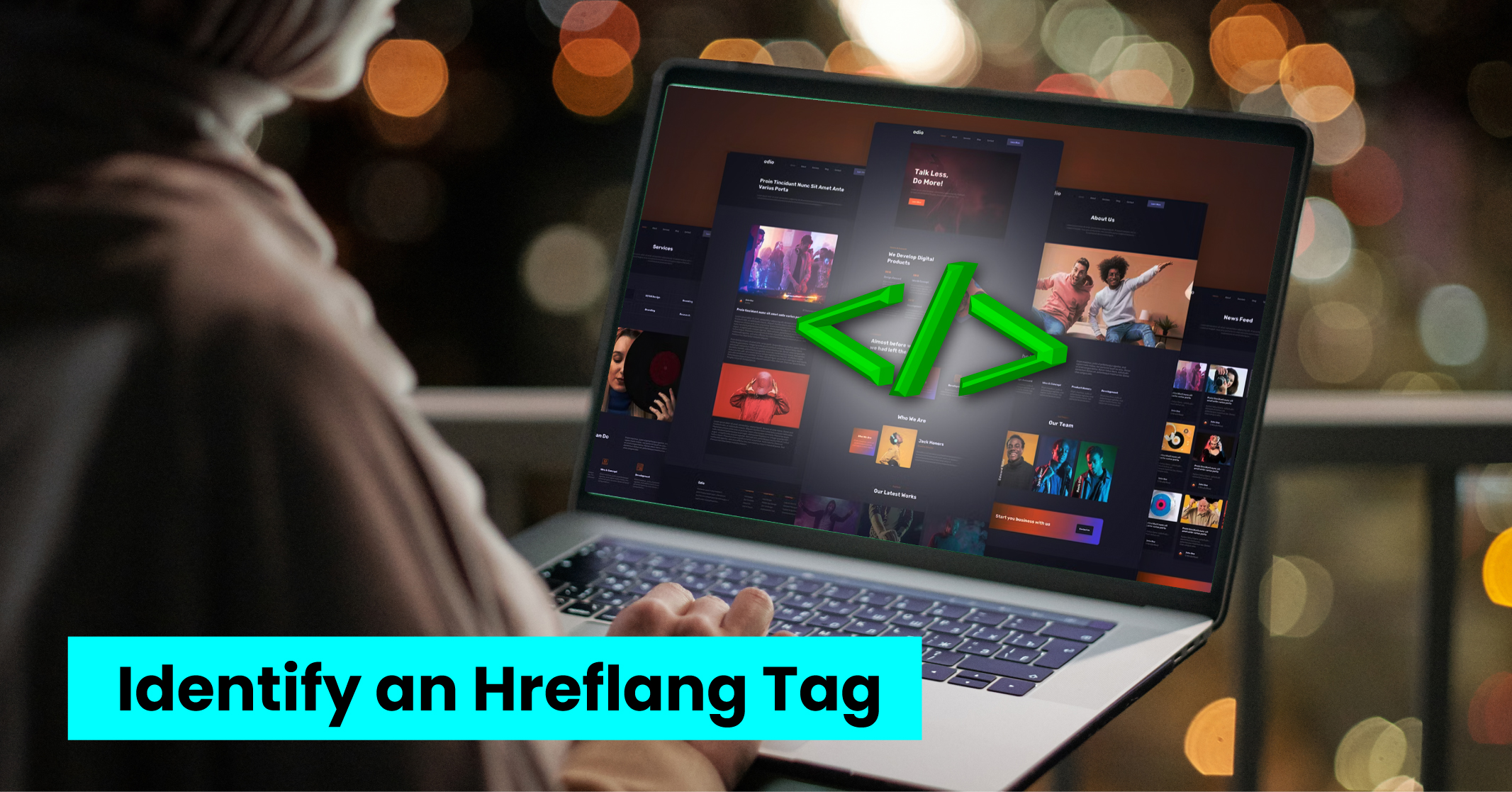I hope you enjoy reading this blog post.
If you want to get more traffic, Contact Us

Click Here - Free 30-Minute Strategy Session
Be quick! FREE spots are almost gone for this Month. Free Quote

As the internet continues to connect people and businesses around the world, it’s more important than ever to ensure that your website is visible to audiences in different countries and regions. This is where international SEO strategies come into play, with Hreflang tags serving as a crucial element in optimising your website for global audiences.
In this blog, we will be delving into the importance of Hreflang tags in international SEO, best practices for their implementation and common mistakes to avoid.

Click Here – Free 30-Minute Strategy Session
Be quick! FREE spots are almost gone for this Month
Hreflang is a useful tool for web developers that provides information about the language and geographical area of a webpage. This attribute allows search engines to display the most relevant version of the page to users based on their language and location preferences, making it an essential element of international SEO strategies.
By implementing hreflang tags, website owners can create targeted pages for different regions, optimising them for local currency, language and other relevant factors. This ensures that users searching for content in a specific country are directed to the most appropriate version of the page, instead of being shown a generic page that may not meet their needs.
What is the main use of Hreflang Attribute?
The practice of International SEO involves optimising your website’s content to make it accessible and pertinent to users in various countries and regions. This requires considering linguistic and cultural differences, as well as the search engines used in different regions.
To accomplish this, web developers can use hreflang tags, which provide:

Hreflang uses a consistent and simple structure that typically looks like this:
<link rel=”alternate” href=”url_of_page” hreflang=”lang_code” />
Here’s what the syntax of this computer language means:
It is important to note that the hreflang tag is a signal, not a directive and is used by search engines like Google and Yandex.
To create an Hreflang tag, you will need to obtain the language and country codes you require and fill in the necessary fields.
An Example: Suppose you have a blog in English that has been translated into Spanish and Portuguese. In that case, the Hreflang attribute for an article should appear as shown below, with a reference to all alternate pages included in the hreflang attribute on each page, including a reference to itself:
<link rel=”alternate” href=”https://example.com” hreflang=”en” />
<link rel=”alternate” href=”https://example.com/es/” hreflang=”es” />
<link rel=”alternate” href=”https://example.com/pt/” hreflang=”pt” />
Suppose you add a country that speaks Portuguese, like Brazil. In that case, you will also need to include the country code in the hreflang attribute. The syntax, in this case, would be hreflang= “language-country” instead of just hreflang=“language,” as shown below:
Portuguese in Portugal:
<link rel=”alternate” href=”https://example.com/pt/” hreflang=”pt-pt” />
Portuguese in Brazil:
<link rel=”alternate” href=”https://example.com/br/” hreflang=”pt-br” />
You should also consider implementing x-default tags.
What Does It Indicate?
They indicate the fallback page for users when no other localized version is suitable. X-default tags are not mandatory to add but are recommended. To implement an x-default tag, add an annotation and set the “href” attribute to the URL where you would like users to land if your site does not support their language, as shown below:
<link rel=”alternate” href=”https://example.com” hreflang=”en-us” />
<link rel=”alternate” href=”https://example.com/es/” hreflang=”es-es” />
<link rel=”alternate” href=”https://example.com/pt/” hreflang=”pt-pt” />
<link rel=”alternate” href=”https://example.com/pt/” hreflang=”pt-br” />
<link rel=”alternate” href=”https://example.com” hreflang=”x-default” />

Hreflang tags help improve the user experience by directing users to the most appropriate version of the website based on their language and location. This ensures that users are more likely to engage with the website and find the content they are looking for.
The tags can help to avoid duplicate content issues, which can negatively impact SEO performance. By indicating to search engines which version of a page is intended for which language or region, you can avoid confusion and ensure that each version of the page is properly indexed and ranked.
Hreflang tags can be implemented in three ways:
Conflicting Hreflang and Rel=Canonical URLs; such issues occur when an hreflang tag refers to a URL that is not considered the main version of a page also known as a non-canonical URL.
What Is a Canonical Tag?
A canonical tag is an HTML attribute that indicates the primary version of a page among duplicate or almost identical pages. It guides search engines to show the most authoritative version of a page in search results.
When an hreflang attribute points to a non-canonical page, it creates a contradiction with the canonical tag, confusing search engines. As a result, they might ignore one or both tags.
To resolve this issue, you need to update the hreflang annotations of each affected URL to refer to the canonical URLs instead.
Learn More: Everything You Need to Know About the Canonical URL
Once you’ve gained knowledge on how to implement hreflang tags and fix related problems, it’s a good idea to automate your hreflang audits to prevent future issues.
By automating your hreflang audits, you’ll receive notifications of any problems before they become more significant.
What To Do?
Note: After each crawl, any new issues will appear in the “International SEO” section of your dashboard. It’s important to regularly check this section to address any hreflang implementation issues promptly.
By automating your hreflang audits, you’ll be able to stay on top of any problems that may arise and ensure your SEO efforts are always running smoothly.

When it comes to implementing Hreflang tags, there are a few best practices and SEO tips to keep in mind.
What To Do?
To create a successful global SEO strategy, it’s important to consider more than just Hreflang tags.
Although Hreflang tags can significantly enhance your international SEO efforts, there are some common pitfalls to avoid:
To maintain proper implementation and consistency of your Hreflang tags throughout your website, you can make use of various Hreflang checker tools that are available. These tools assist you in identifying any inaccuracies or problems with your Hreflang tags and provide suggestions to rectify them.
Some of the widely used Hreflang checker tools include:
From international targeting with Google Ads to social media, mobile sites and apps, you can use Hreflang tags for a variety of applications.
Hreflang tags play a significant role in optimizing websites for global audiences by indicating language and geographic targeting.
They help:
It’s crucial to implement Hreflang tags accurately and consistently, in conjunction with other global SEO strategies, for optimal results. With the internet connecting people and businesses worldwide, the future of global SEO will keep evolving, and Hreflang tags will continue to be an essential element in enhancing website visibility for international audiences.
Do you want to partner with a leading SEO and digital marketing agency? Entrust the services of Traffic Radius. We help businesses looking to improve their online presence and drive more traffic to their website.
We are a leading digital marketing agency offering a wide range of services including SEO and PPC advertising to social media and content marketing. Get in touch with us today to discuss your business needs and get a free quote.
Hreflang tags serve the purpose of guiding search engines to present the correct version of a webpage to users based on their language and location. This is especially important for websites with various language versions or content variations across different regions, as it prevents duplicated content and enhances user experience by directing them to the most suitable version of the page.The hreflang attribute is added to the page’s HTML code to indicate the specific language and geographic targeting of the page. By effectively utilising hreflang tags, website owners can improve their international SEO strategies and increase their online visibility to a global audience.
To clarify, the “Lang” attribute is used to indicate the language of the content on a web page, while the “hreflang” attribute is used to indicate language and geographic targeting to search engines, to improve the visibility and relevance of the page to users in different locations and languages.The “Lang” attribute is a basic element of HTML, while “hreflang” is a more advanced feature used primarily in international SEO.

LEAVE A REPLY